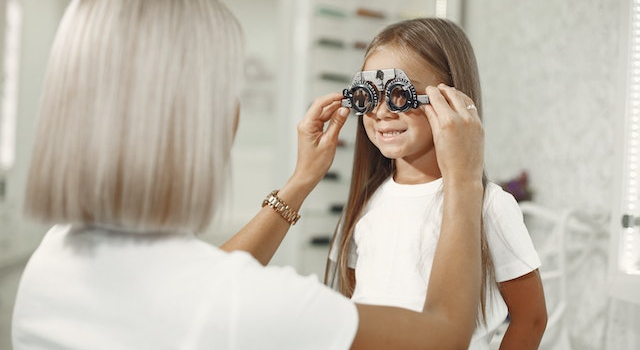
Every parent wants their child to have the best start in life, and good vision is a critical part of that foundation. During Children's Eye Health and Safety Month, it is essential to focus on the importance of early detection of eye problems in children. Identifying vision issues early can make a significant difference in a child's development, academic success, and overall quality of life.
Below, our Arlington Heights eye care team at Palermo Eye Care discusses why it is so important to detect and treat these issues early, signs to look out for, and how we can help.
Why Early Detection and Treatment Are Crucial
Children rely heavily on their vision for learning and interacting with the world. From reading and writing to recognizing faces and playing with friends, clear vision plays a significant role in their development. Unfortunately, many eye problems in children go unnoticed because kids may not realize they have an issue, or they might struggle to express their concerns.
Early detection of eye problems allows for timely intervention, which can prevent more severe issues down the road. For example, conditions like amblyopia (lazy eye) and strabismus (crossed eyes) are more effectively treated when caught early. Left untreated, these issues can lead to permanent vision loss or significant developmental delays as your child grows up. Regular eye exams ensure that any problems are identified and addressed before they can impact a child's learning and development.
Warning Signs Your Child Might Be Struggling to See
Parents play a crucial role in observing and identifying signs of potential eye problems in their children. Here are some key indicators to watch for:
Frequent Squinting or Eye Rubbing: If your child squints or rubs their eyes often, it could be a sign that they are struggling to see clearly.
Tilting or Turning the Head: A child who consistently tilts or turns their head while trying to focus on something may compensate for a vision issue, such as misalignment of the eyes.
Sitting Too Close to Screens or Holding Books Close: Children who sit close to the TV or hold books too close to their face may be doing so to compensate for poor vision.
Difficulty with Hand-Eye Coordination: Trouble catching a ball, drawing, or coordinating movements may indicate an underlying vision problem.
Complaints of Headaches or Eye Strain: Persistent headaches, especially after reading or focusing on close-up tasks, can be a sign of vision issues like farsightedness or astigmatism.
Avoiding Reading or Other Close-Up Activities: If your child avoids reading, it may not be a lack of interest but rather a struggle to see the words clearly.
How Our Eye Clinic Can Help
We are dedicated to ensuring that your child receives the best possible eye care. We offer comprehensive pediatric eye exams designed to detect even the smallest vision issues. Our experienced optometrists use child-friendly techniques and tools to make the examination process comfortable and stress-free for your little one.
If an eye problem is detected, we will work with you to develop a personalized treatment plan. Whether your child needs corrective glasses or contacts, or specialized treatment for conditions like amblyopia or strabismus, our team is here to support you every step of the way.
Schedule Your Child's Eye Exam
Regular eye exams are essential for detecting potential issues before they affect your child's vision and development. During Children's Eye Health and Safety Month, make your child's eye health a priority by scheduling a comprehensive eye exam at our clinic. Together, we can ensure your child has the clear vision they need to thrive.

